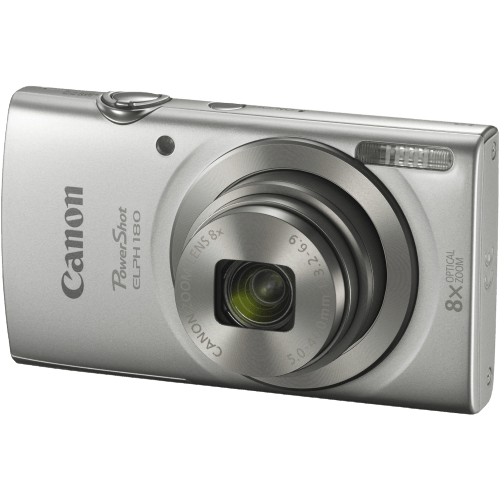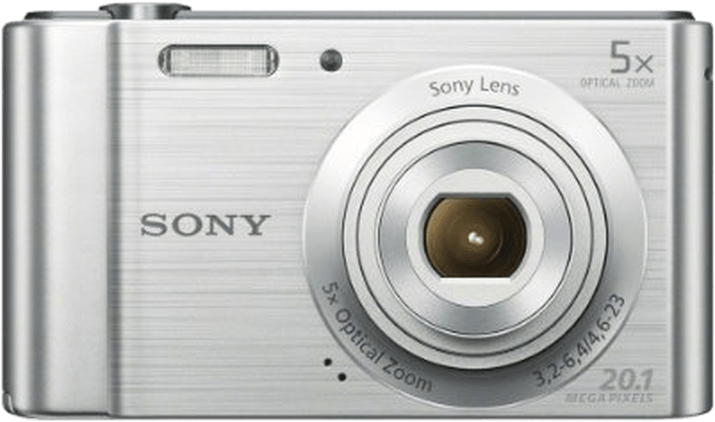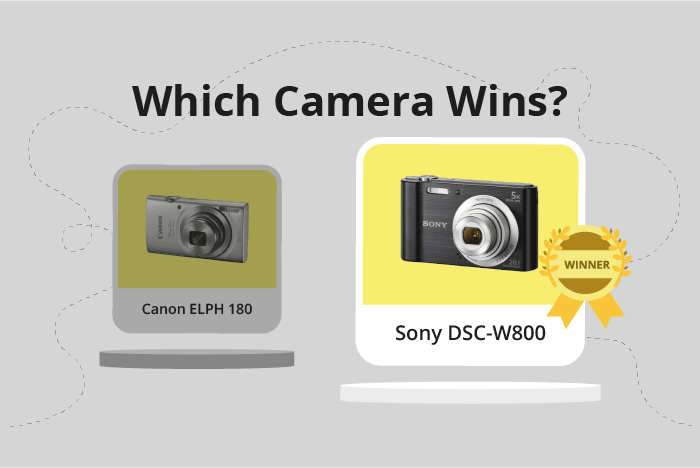Canon PowerShot ELPH 180 vs Sony Cyber-shot DSC-W800/B Comparison
Canon PowerShot ELPH 180

Sony Cyber-shot DSC-W800/B

The Sony Cyber-shot DSC-W800/B comes out on top with a score of 53/100, while the Canon PowerShot ELPH 180 trails behind with a score of 46/100. Both cameras are compact and share similar weight, with the Sony model weighing 125g and the Canon model weighing 126g.
The Canon PowerShot ELPH 180 was released in 2016 and had a launch price of $120, while the Sony Cyber-shot DSC-W800/B was released in 2014 with a launch price of $80. The Sony camera’s advantage lies in its better score and more affordable price. However, the Canon model is newer, which may offer some benefits in terms of technology and features.
Taking into account the scores, prices, and release dates, the Sony Cyber-shot DSC-W800/B is the better option for those seeking an affordable compact camera, while the Canon PowerShot ELPH 180 may be more suitable for those who prioritize newer technology.
Canon PowerShot ELPH 180 vs Sony Cyber-shot DSC-W800/B Overview and Optics
The Sony Cyber-shot DSC-W800/B takes the lead in optics with a score of 60/100, while the Canon PowerShot ELPH 180 scores 53/100. Both cameras share several common specifications, including 20 megapixels, a CCD sensor type, a 1/2.3″ sensor size, fixed lens mounts, and image stabilization.
The Sony Cyber-shot DSC-W800/B outperforms the Canon PowerShot ELPH 180 in some aspects. It has a faster shooting speed of 1 compared to the Canon’s 0.8, allowing for quicker image captures. The Sony camera also has a more powerful processor, the Bionz, which enhances image quality and processing speed. Furthermore, the DXOMARK score for the Sony’s sensor is 91, significantly higher than the Canon’s 66, indicating better overall sensor performance.
On the other hand, the Canon PowerShot ELPH 180 has its advantages. It uses the Digic 4+ processor, which, although not as powerful as the Sony’s Bionz processor, still provides good image processing capabilities. However, there are no other notable areas where the Canon camera surpasses the Sony one in terms of optics.
Taking into account the scores and specifications, the Sony Cyber-shot DSC-W800/B is the better choice when it comes to optics. Its faster shooting speed, superior processor, and higher DXOMARK sensor score give it an edge over the Canon PowerShot ELPH 180. The Canon camera, while still offering decent optics, falls short in comparison to the Sony model.
Canon PowerShot ELPH 180 vs Sony Cyber-shot DSC-W800/B Video Performance
The Canon PowerShot ELPH 180 and the Sony Cyber-shot DSC-W800/B have the same video capabilities, with both cameras receiving a video score of 34/100. This indicates that there is no clear winner in this category, as they share identical video specifications.
Both cameras offer standard HD video resolution with maximum dimensions of 1280 x 720 pixels. This means that users can expect similar video quality from either camera. Additionally, both cameras have a maximum video frame rate of 30fps, ensuring smooth video playback from both devices.
Neither the Canon PowerShot ELPH 180 nor the Sony Cyber-shot DSC-W800/B have built-in time-lapse functionality. This feature allows users to capture a series of images at set intervals, which are then combined into a video that shows the passage of time. The absence of this feature in both cameras means that users looking for time-lapse capabilities will need to explore other options.
There are no specific areas where one camera outperforms the other in terms of video capabilities, as they share the same specifications. The same applies to the areas where one camera performs worse than the other, as there are none. This makes the decision between the Canon PowerShot ELPH 180 and the Sony Cyber-shot DSC-W800/B solely dependent on other factors, such as price, design, and additional features.
Given the identical video scores and specifications, potential buyers can confidently choose either camera without sacrificing video quality. The decision should be based on other factors, such as personal preference, budget, and additional features offered by each camera.
Canon PowerShot ELPH 180 vs Sony Cyber-shot DSC-W800/B Features and Benefits
The Sony Cyber-shot DSC-W800/B is the winner in this comparison, with a feature score of 47/100, while the Canon PowerShot ELPH 180 has a score of 34/100. Both cameras share some common specifications, including a 2.7-inch screen size, 230,000-dot screen resolution, lack of a touchscreen, and WIFI connectivity. However, there are some key differences between the two models that contribute to the Sony camera’s higher score.
The Sony Cyber-shot DSC-W800/B outperforms the Canon PowerShot ELPH 180 with its flip screen and Bluetooth connectivity. The flip screen allows for more versatile shooting angles and is particularly useful for taking selfies or capturing images from difficult angles. The inclusion of Bluetooth in the Sony camera enables seamless transfer of photos and videos to other devices, making it easier for users to share their captured moments.
On the other hand, the Canon PowerShot ELPH 180 does not have any specific features that make it better than the Sony Cyber-shot DSC-W800/B. Both cameras lack GPS functionality, and the Canon camera does not have a flip screen or Bluetooth connectivity.
Considering the differences in their feature scores and specifications, the Sony Cyber-shot DSC-W800/B is the better choice among the two cameras. Its flip screen and Bluetooth connectivity give it an edge over the Canon PowerShot ELPH 180, offering users more convenience and flexibility in capturing and sharing their photos and videos. The Canon camera, while sharing some basic features with the Sony model, does not provide any additional advantages to make it a more appealing option.
Canon PowerShot ELPH 180 vs Sony Cyber-shot DSC-W800/B Storage and Battery
The Canon PowerShot ELPH 180 outperforms the Sony Cyber-shot DSC-W800/B in storage and battery, scoring 27/100 compared to Sony’s 13/100. Both cameras have one memory card slot and accept SD/SDHC/SDXC cards. The ELPH 180 also supports UHS-I compatibility, while the W800/B additionally accepts Memory Stick Pro Duo/Pro-HG Duo cards.
The ELPH 180 has a longer battery life of 220 shots, compared to the W800/B’s 200 shots. Additionally, the ELPH 180 uses an NB-11LH battery and offers USB charging, making it more convenient for on-the-go users. On the other hand, the W800/B uses an NP-BN battery and does not support USB charging.
Although the Sony W800/B has a slightly shorter battery life and lacks USB charging, its compatibility with Memory Stick Pro Duo/Pro-HG Duo cards may appeal to some users. However, the Canon ELPH 180’s longer battery life, USB charging, and UHS-I compatibility make it the superior option in terms of storage and battery.
Canon PowerShot ELPH 180 vs Sony Cyber-shot DSC-W800/B – Our Verdict
Are you still undecided about which camera is right for you? Have a look at these popular comparisons that feature the Canon PowerShot ELPH 180 or the Sony Cyber-shot DSC-W800/B:

